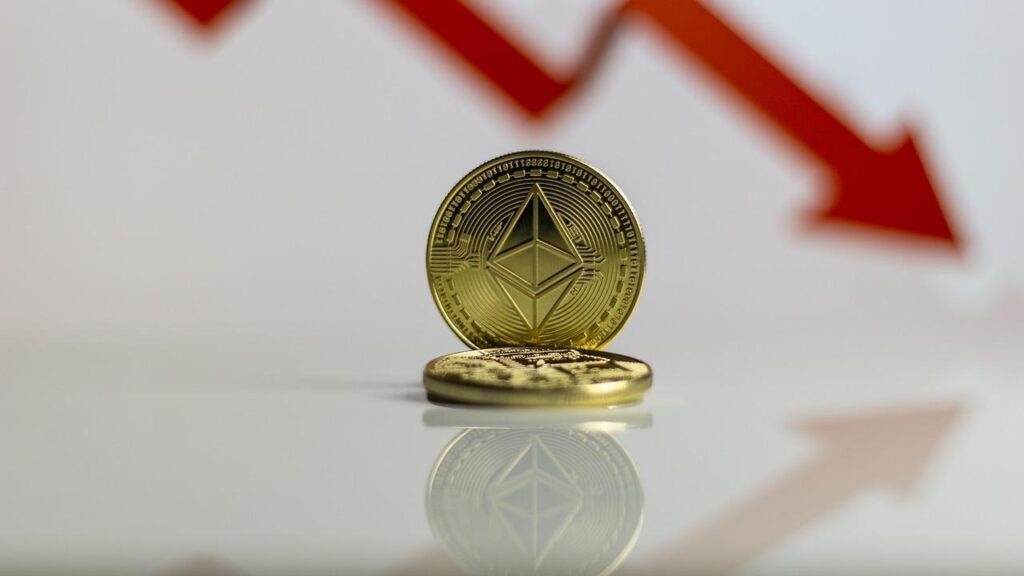
Since the launch of ETH-ETF trading on July 23, 2024, Ethereum, the second-largest cryptocurrency by market capitalization, has fallen by over 31%. While Bitcoin maintains its reputation as “digital gold” suitable for long-term holding, Ethereum is primarily used for transaction fees, smart contracts, and interactions with DeFi applications.
The “coin” created by Vitalik Buterin also makes money through passive methods like lending in decentralized protocols and staking. But compared to Bitcoin, Ethereum’s wider use case has brought additional complexity.
Ethereum’s Financial Environment
When the ETH-ETF was launched in the United States, Ethereum’s value started to lag behind Bitcoin, but after the Dencun update in March 2024, the cryptocurrency’s economic dynamics changed. With the introduction of a new transaction type designed to handle massive binary data sets, this hard fork brought about a number of significant enhancements targeted at network scaling. Updates like this significantly decreased transaction prices in Layer 2 networks, including Base, Arbitrum, Optimism, and zkSync.
Transaction fees dropped significantly, easing the load on Ethereum but also reducing revenue for both mainnet validators and Layer 2 operators. Users now pay less in ETH, which affects the earnings of network participants.
Following the hard fork, daily cumulative earnings in Base, Optimism, Arbitrum, Scroll, zkSync, and Zora range from $60,000 to $200,000. In contrast, throughout 2023 and early 2024, these figures rarely fell below $500,000 and peaked at over $2 million per day in March 2024.
Similarly, daily earnings in Ethereum’s mainnet have plummeted by tens of millions. At their peak in March 2024, these earnings exceeded $30 million but have since fallen to around $400,000 per day in August and early September.
Etherscan and Token Terminal report that Ethereum’s active user base has not changed despite these drops. Every day, approximately 400,000 to 500,000 active addresses are reported by both platforms in the mainnet and approximately 2 million in Layer 2 networks.
Rates of Inflation
The Ethereum network is steadily being used, yet transaction costs have decreased dramatically. The most worrying modification is the acceleration of ETH’s inflation rate, which reversed following the Dencun upgrade for the first time since The Merge’s switch to the Proof-of-Stake (PoS) consensus method.
Ethereum has the ability to deflate during times of high transaction activity because of a built-in mechanism that burns a fraction of coins in every transaction. This feature was introduced with the London upgrade in 2021. As a result, ETH in circulation can both increase and decrease depending on network activity and transaction fees.
As of the time of writing, Ethereum’s 30-day inflation rate stands at ~0.7% annually (69,000 ETH or ~$162 million). For comparison, Bitcoin’s inflation over the same period is 0.8% annually, with around 13,980 BTC ($780 million) created.
Despite community concerns and suggestions to increase fees again, the stable network usage indicates there may still be positive outcomes ahead.
Validators and Staking
Since late August, the amount of ETH staked has increased by 198,000 ETH. Metrika reports that deposits of ETH are roughly 1.5 times greater than withdrawals, therefore countering the previous 30 days’ inflation.
Interest in staking Ethereum is still high despite the decline in price. Early in September, there were about 1,070,000 validators using the network, and a total of over 34,200,000 ETH had been staked. The weekly net deposit inflow amounts to approximately 200,000 ETH; however, starting March 2024, there has been a modest decrease noted.
Remarkably, 70% or more of stakers joined the market at a time when ETH was trading below $2,300. This indicates that the majority of validators are still experiencing pain. Furthermore, during a time when prices were below $1,900, roughly 20 million ETH were staked.
The Macroeconomic Determinants
The growing interest in other cryptocurrencies may also be connected to the price decrease of ETH. The market share of Ethereum has been declining over the past two years. From June 2023 to the beginning of September 2024, ETH’s share of the market fell from 20% to 14.6%. During the same period, Bitcoin’s market share rose from 48% to 56%, and Solana (SOL) increased from 0.6% to 3%.
However, dominance is just a macro indicator, showing that ETH behaves similarly to other altcoins, which have steadily lost ground to Bitcoin. What’s more important is that the cryptocurrency market is increasingly correlating with traditional indices like the S&P 500 and Nasdaq.
This suggests that markets now perceive cryptocurrencies as risky assets whose value and trends heavily depend on U.S. monetary policy. When traders and investors anticipate a shift in the Federal Reserve’s stance, they hedge their positions accordingly. This is a temporary phenomenon that impacts short-term price movements of risky assets, including ETH. Why Ethereum has fallen more than other top altcoins, however, remains an open question, though the reasons could be quite simple.
Liquidation Cascades
August 2024 saw record levels of liquidations in DeFi applications. In the last month of summer, traders lost over $436 million in collateral placed in lending protocols like Aave. The only month with greater losses was May 2021.
The bulk of liquidations occurred on August 5, when not just Ethereum but the entire market saw double-digit losses in a single day. Since Ethereum is the largest collateral asset in decentralized finance applications, this sharp drop likely triggered a cascade of liquidations, further driving down the price of ETH.
This scenario bears similarities to a “long squeeze”—the reverse of a short squeeze—in which an overabundance of leveraged long bets leads to a decline in price. Closing these positions increases the sell pressure and drives down prices even lower.
How the Decline of Ethereum Affects Arab Players’ Access to Online Casinos
Online casinos, especially those that serve players from the Arabian world, have been impacted significantly by the decrease in Ethereum’s value. Ethereum is a payment mechanism that many online casinos have embraced since it provides quicker transactions and cheaper fees than traditional currencies. Click here to see the full list of online casinos for Arab players that use crypto payment methods.
However, gamers have noticed a decline in the value of their casino balances as Ethereum’s price has fallen, which has a direct impact on their gaming experience. Some users may be discouraged from using Ethereum for deposits as a result, particularly if they are worried about more price volatility.
Ethereum’s integration with online casinos continues to be appealing to Arab players who value privacy and decentralization, but recent price volatility raises questions about the cryptocurrency’s long-term viability in gaming situations. While some casinos might make adjustments by promoting other stable cryptocurrencies or offering bonuses, Ethereum’s place in the online gambling sector might be impacted if its value keeps changing.
In Conclusion
The current decline in Ethereum’s price appears to be more the result of speculation than of macroeconomic or economic considerations. In an attempt to mimic established financial systems, the ecosystem’s dependence on debt-like mechanisms probably fueled the panic and put further pressure on ETH prices.














